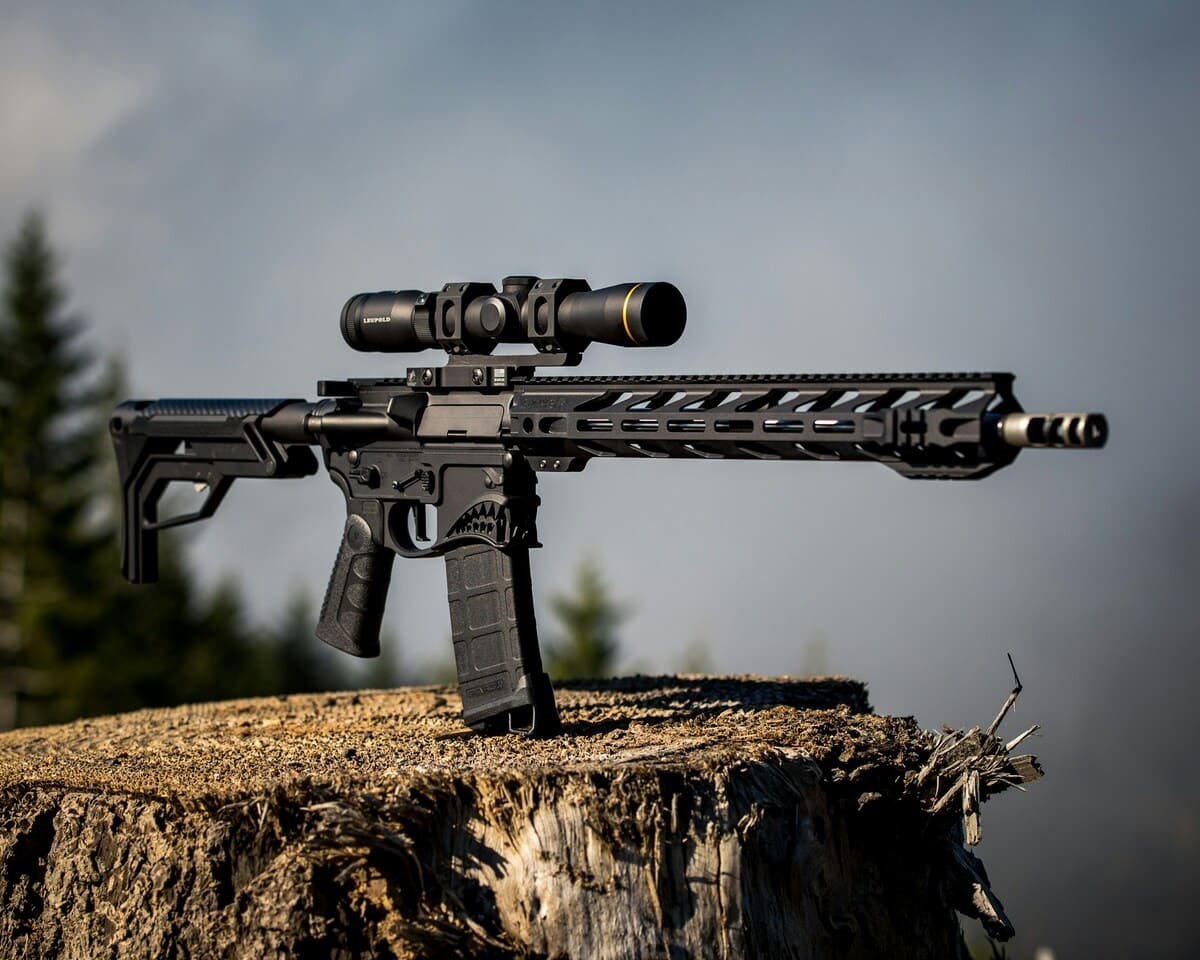4 Facts About Guns
Guns play a complex role in our society, and understanding the facts about them is key to having informed discussions and making wise decisions. Whether you’re talking about their historical significance, ownership statistics, or the pressing issues of gun violence and regulations, it’s important to approach these topics with a well-rounded perspective.
By recognizing the different views and experiences people have with guns, we can create a more balanced conversation. This way, we can work together to develop responsible policies that respect individual rights while keeping public safety a top priority.
Let’s dive into the facts and insights surrounding firearms together with Arms Directory, the one-of-a-kind online community of firearm professionals and enthusiasts alike, so we can better navigate this intricate subject and make informed choices for the well-being of our communities.
History of Guns
The history of firearms is a captivating journey through the evolution of weaponry, shaping societies and conflicts over centuries. From their early development, firearms have undergone remarkable transformations, altering the dynamics of warfare and law enforcement.
Firearms trace their roots to ancient China, where gunpowder was discovered. Early gunpowder-based devices, such as flamethrowers and crude guns, emerged. The advent of the matchlock in the 15th century marked a significant step, introducing a mechanism for igniting gunpowder.
Guns found pivotal roles in military and law enforcement applications. Muskets and rifles became standard issue for soldiers, changing the nature of battles. As societies organized professional police forces, handguns became tools of law enforcement.
The 19th century witnessed a revolution in gun technology. Samuel Colt’s invention of the revolver in 1836 offered rapid-fire capability, transforming personal firearms. Semi-automatic pistols, introduced in the early 20th century, further enhanced firepower.
The role of guns in military applications expanded with the invention of repeating rifles, maximizing efficiency in combat. World War I and II saw the widespread use of semi-automatic and automatic firearms, influencing tactics and strategies.
The late 20th century brought innovations like polymer-framed handguns and modular rifle designs. The rise of sniper rifles and precision-guided firearms showcased the continued evolution in gun technology.
Beyond their utilitarian roles, guns have become cultural symbols, influencing art, literature, and film. The Colt Single Action Army, known as the “Peacemaker,” is an icon of the American West, while the AK-47 holds a distinct place in global imagery.
Gun Ownership Statistics
Understanding the landscape of gun ownership involves examining statistics that reveal trends, disparities, and influencing factors. These figures provide valuable insights into the complex relationship between individuals and firearms, shaping discussions on regulation and public safety.
In the United States, a nation with a deeply rooted gun culture, statistics on gun ownership are both intriguing and consequential. According to estimates, approximately 40% of American households own at least one firearm. However, this ownership is not evenly distributed across demographics.
Examining trends over time, there has been notable variation in gun ownership rates. While the overall number of firearms in circulation has risen, the percentage of households owning guns has seen fluctuations. Factors like social, political, and economic changes contribute to these shifts.
Demographic factors play a crucial role in influencing gun ownership rates. Age, for instance, is a significant determinant. Older individuals are more likely to own firearms, often attributing it to traditions, self-defense considerations, or recreational purposes. Gender differences also exist, with men being more likely gun owners than women.
Geographic location further influences gun ownership. Rural areas often exhibit higher ownership rates, reflecting the connection between firearms and activities like hunting and farming. In contrast, urban areas may have lower ownership rates due to stricter regulations, reduced access to recreational shooting spaces, and cultural differences.
Internationally, gun ownership statistics vary widely. In countries with stringent gun control measures, ownership rates are significantly lower. In nations where firearms are deeply ingrained in cultural practices, such as Switzerland, gun ownership is relatively high.
It’s essential to approach gun ownership statistics with a nuanced perspective. While numbers provide valuable insights, they don’t capture the diverse motivations behind gun ownership, which range from personal safety concerns to sporting and recreational interests.
Gun Violence Statistics
Examining gun violence statistics is crucial for comprehending the multifaceted impact of firearms on societies worldwide. By delving into figures related to homicides, suicides, and accidental deaths, we gain insights into the complex interplay between guns and public safety.
Homicide rates associated with firearms vary significantly across countries and regions. In the United States, where the debate on gun control is particularly intense, gun-related homicides constitute a substantial portion of overall homicides. However, it’s essential to recognize that not all countries share this pattern. Nations with stringent gun control measures often report lower gun-related homicide rates.
Suicides involving firearms present another dimension of the gun violence issue. In various countries, firearms are a prevalent means of suicide. Access to guns increases the lethality of suicide attempts, making this a critical aspect of public health concerns related to firearms. Understanding these statistics helps guide mental health interventions and suicide prevention strategies.
Accidental deaths involving firearms, while comparatively lower than intentional incidents, remain a significant concern. These tragedies often involve improper storage, handling, or lack of education about firearm safety. Implementing measures to promote responsible gun ownership, including education and safe storage practices, can contribute to reducing accidental deaths.
Comparative analyses of gun violence rates globally highlight the impact of differing gun policies. Countries with stricter regulations generally exhibit lower rates of gun-related violence. This correlation underscores the potential effectiveness of comprehensive gun control measures in enhancing public safety.
The broader impact of gun violence on public health is profound. Beyond the immediate victims, communities face enduring consequences, including trauma, economic burdens, and strained healthcare systems. Addressing the root causes of gun violence requires a comprehensive approach that combines legislation, education, mental health support, and community engagement.
Gun Laws and Regulations
Navigating the landscape of gun laws in the United States involves a complex interplay between federal and state regulations, reflecting the nation’s diverse perspectives on firearms. At the federal level, laws such as the Gun Control Act of 1968 and the National Firearms Act establish foundational guidelines. However, individual states possess significant autonomy in crafting additional regulations, contributing to a patchwork of laws.
The ongoing debate over gun control revolves around finding a balance between individual rights and public safety. Advocates for stricter regulations often point to the correlation between stringent laws and lower rates of gun violence in other countries. On the other side, proponents of expansive gun rights emphasize the Second Amendment and argue that responsible gun ownership enhances personal safety.
The impact of gun laws on gun violence rates remains a contentious issue. Research studies aim to unravel the complexities of this relationship, exploring how various legislative measures influence outcomes. Striking the right balance requires a nuanced understanding of factors such as background checks, waiting periods, and restrictions on certain firearms.
Organizations and advocacy groups play a pivotal role in shaping gun policies. The National Rifle Association (NRA), one of the most influential voices in this realm, advocates for gun rights and opposes restrictive measures. Conversely, groups like Everytown for Gun Safety push for more comprehensive gun control, contributing to a dynamic discourse that reflects the diversity of perspectives within society.
Conclusion
In summary, understanding the facts about guns unveils a multifaceted landscape shaped by history, ownership trends, violence statistics, and regulatory frameworks. Fostering informed conversations and decisions is imperative as societies navigate the delicate balance between individual rights and public safety.
The complexities surrounding guns demand ongoing research, dialogue, and thoughtful policy-making to ensure a future that respects diverse perspectives while prioritizing the well-being of communities.







